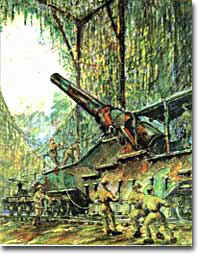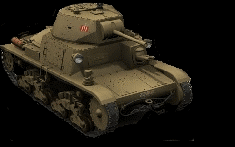|
LINKS |
The Great War
World War I was indeed like no other war known to humankind. Europeans saw new destructive weapons and expanded government control of the economy and of society. They witnessed the total mobilization of their nations' resources and massive battle losses in just a matter of days. Europeans had welcomed the war in August 1914, but they soon tired of it. People on the home front suffered from shortages, depressing battlefront news, and inertia. Weakened by hunger, many Europeans fell victim to an influenza epidemic that killed nearly 20 million people worldwide from 1918-19. The war was precipitated by an assassination, but the conflict had its roots in nearly 40 years of increasing tension between England, France, Russia, Austria, Germany, and Serbia. The forces of industrialization and imperialism combined with economic protectionism to cause great friction between European neighbors.
Why is it called a World War? Wasn't it mostly a
European civil war? All told, thirty-two countries were involved in the
conflict. It is important to consider that in 1914 thirty-two countries
represented a far greater percentage of the world's nations than it does
today. World War I in fact helped to enlarge the number of nations.
The war pitted the Allied powers of France, Belgium, Britain, Russia, and Serbia against the Central Powers of Germany, the Austro-Hungarian Empire, and the Ottoman Empire. Greece, Italy, and Portugal eventually fought on the side of the Allied Powers. Britain brought its colonial armies from Australia, Africa, India, and Canada to wage war for the Queen. Fighting also took place in Africa and the South Pacific as European nations' colonial subjects fought against each other. Japan fought for German territory in China. And the Ottoman Empire engaged Britain in the Middle East. In addition, the United States entered the war in 1917, prompted by German U-boat attacks, the Zimmerman telegram, and President Woodrow Wilson's vision of a postwar international order. The war progressed in five main stages:
Populations had expanded very rapidly in the latter half of the 19th century, in part because there were no major wars in Europe after 1815, and in part because industrialization had created better living standards. Larger and larger armies, capable of being moved on new rail systems, combined with old-style military tactics and the new machinery of war to make the mass slaughter of WWI possible. In addition to the terrible loss of life, Europe experienced great environmental and economic devastation. Farms and industries were destroyed, the land ravaged by four years of artillery bombardments. Soldiers drowned in the massive craters left by bombing, and innocent civilians triggered many undetonated bombs. The Austro-Hungarian, Russian, and Ottoman empires, anachronistic in the 20th century, were also destroyed by the war. Their collapse gave rise to new nations in Eastern Europe and the Middle East. The war also engendered the League of Nations, a diplomatic mechanism designed to mediate international disputes and prevent the outbreak of another slaughter. Empires collapsed during World War I. So did the idea of a European community and the superiority of Western civilization. During the war the world "broke in pieces," Erich Maria Remarque wrote in All Quiet on the Western Front. Given the psychological and physical trauma of the war, putting the world back together seemed a daunting task to most Europeans.
|
|||||||||||||||||||||
| In the Trenches | ||||||||||||||||||||||
| Home Fronts in Europe | ||||||||||||||||||||||
| The Russian Revolution | ||||||||||||||||||||||
Governments for the first time waged a large-scale poster propaganda campaign during World War I to unify public opinion at home, support morale among soldiers, and raise desperately needed funds. |






